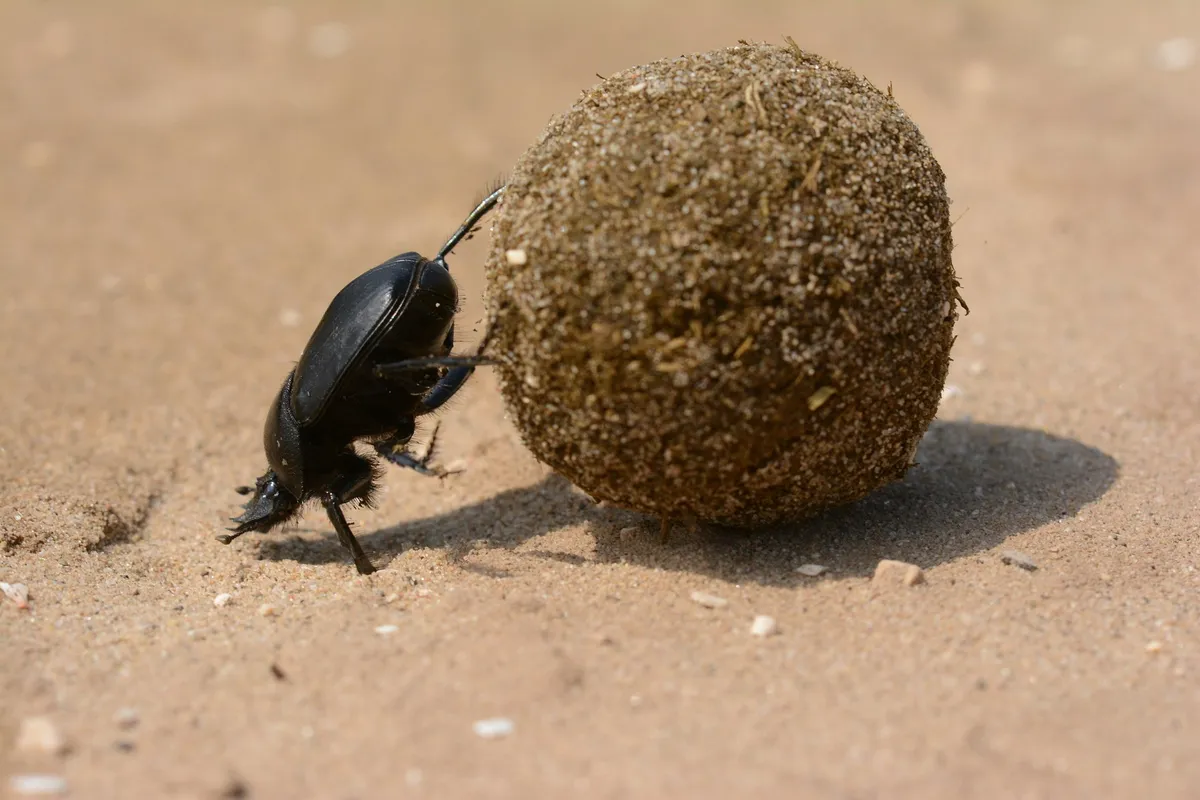From the largest pelican species, the Dalmatian pelican, to the strange DiCaprio’s snail-eating snake, there’s a diverse array of fascinating animals whose names start with the letter 'D.'
Animals that start with D
Darwin’s frog
When it comes to the letter D it's no surprise to find species named after Charles Darwin. Confusingly, ‘Darwin’s frog’ and ‘Darwin’s frogs’ can be used to describe both a family of frogs and separate species. The Rhinodermatidae family contains just three species across two genera, and the two belonging to Rhinoderma are known as the southern Darwin’s frog (discovered by Charles Darwin and sometimes just Darwin’s frog) and northern Darwin’s frog (or Chile Darwin’s frog).
DiCaprio’s snail-eating snake
One of five snail-eating snakes described by scientists published in 2023 paper, the DiCaprio’s snail-eating snake is found in Panama and Columbia. It was named ‘irmelindicaprioae’ by actor and conservationist Leonardo DiCaprio in honour of his mother Irmelin DiCaprio.
The newly described species is known from 16 localities in Panama and Colombia. One of these is an isolated population in the Cordillera Oriental mountain range of Colombia, which occurs at higher elevations and has a slightly different pattern, and which may turn out to be a different species upon further genetic analysis.
Damselfly

Closely related to dragonflies, with whom they form the Odonata class, damselflies are smaller and daintier. They typically rest with their wings together, held up above their bodies, whilst dragonflies usually rest with their wings held out to the side.
Dingo

A wild dog found in Australia, it is descended from a breed of domestic dog introduced to Australia roughly 4,000 years ago. Considered a pest by European colonisers who were farming the land, the dingo was hunted and its range much reduced.
Dhole

The dhole is known by a few other names including whistling dog, red dog and Asiatic wild dog. Dholes live in social groups in eastern and southern Asia across a wide variety of habitats, with large territories of up to 34 square miles (88 square kilometres).
Dartford warbler

A distinctive bird, the Dartford warbler was at the brink of extinction in the UK, but its fortunes have improved over the last 50 years thanks to the work of conservationists. The species is restricted to lowland heath habitats in southern and eastern England.
Dark-edged bee-fly

The dark-edged bee-fly can be mistaken for a bee thanks to its colouration and fluffy body, but look out for the single pair of wings. Its larvae are parasitic, and the female can be seen throwing her eggs into the nests of solitary bees in a ‘twerking’ motion.
Diving bell spider

So-named for the bubble of air that it creates within a web of silk, the diving bell spider (or water spider) lives almost entirely under water. It returns to the safe only to replenish the oxygen supply in its diving bell.
Darwin’s finches

Also known as the Galápagos finches, this group of 18 finches were collected by Charles Darwin during his voyage on the HMS Beagle to the Galápagos Islands, and played a vital role in his theory of evolution.
Dalmation pelican

The largest pelican species – and amongst the largest of living flying bird species – the Dalmatian pelican is native to the lakes, rivers and estuaries of central Eurasia. Fossil records show that it bred in Britain until medieval times.
Donkey

Donkeys are not small horses with big ears! Domestic donkeys originated from the African wild ass in semi-arid regions of Northeast Africa. Clues hinting towards their desert ancestry may be seen from their coats and hair density, which has different properties to that of the UK’s native horse and pony breeds who are better adapted to colder, grassy, open landscapes.
- Why donkeys aren’t waterproof like horses: The real reason they can't handle rain
- What's the difference between a horse and a donkey?
- How long do donkeys live?
Dung beetle

The dung beetle does what it says on the tin: it uses faeces, typically from herbivores and omnivores, for food and nest sites.
There are three types of dung beetle;
Rollers form balls of dung that are rolled away for burial, to be used as both an egg-laying site for the female and a food source for the adults and resulting grubs
Tunnellers dig down into and beneath the pile of dung, burying part of it as an underground larder
Dwellers live and raise their offspring within the dung.
Dik-dik
These miniature antelopes stand only about 16 inches tall. Small as they are, they are unsurprisingly prey animals for many carnivores in the shrublands and savannas of eastern Africa where they live.

